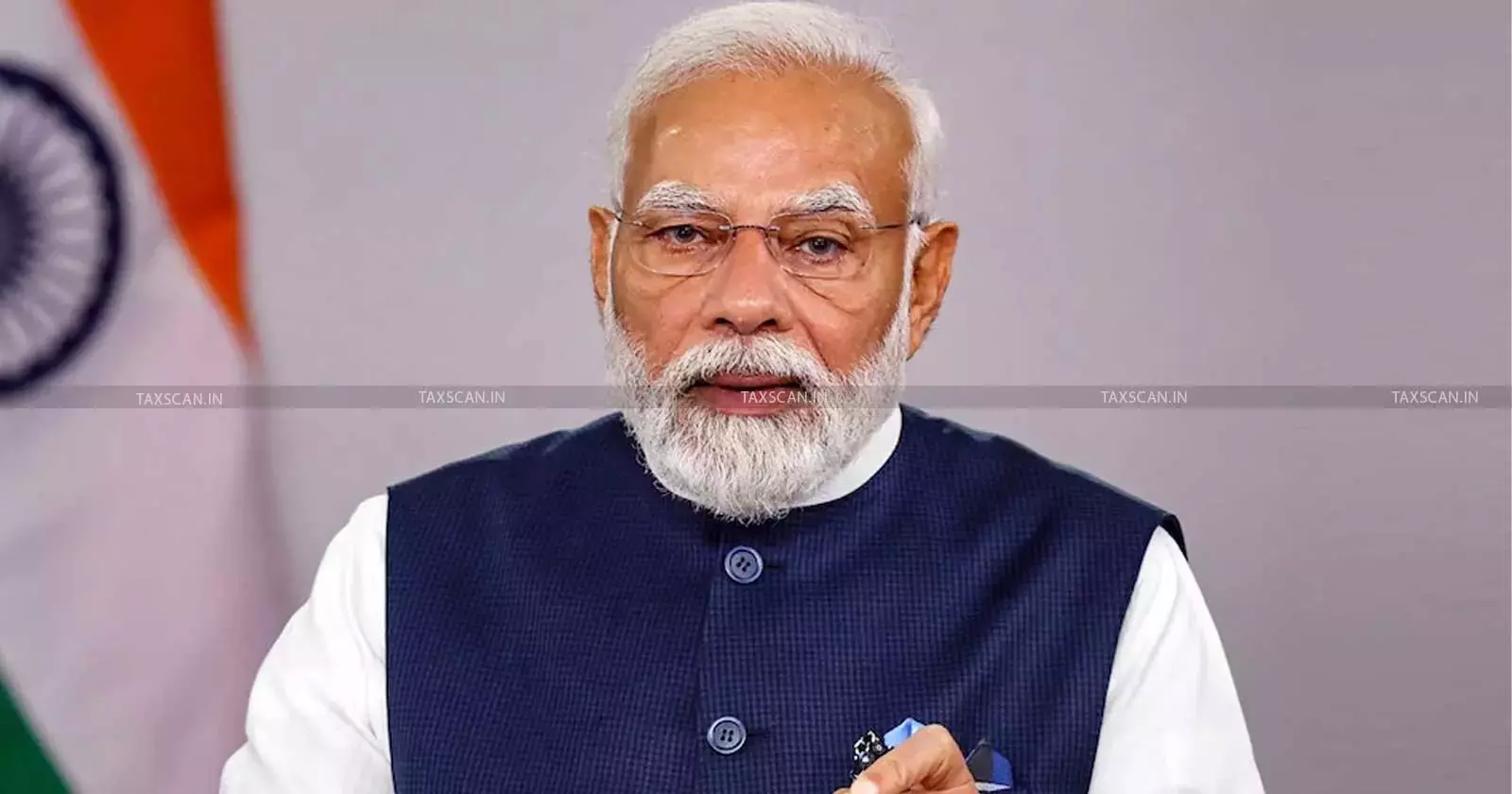Major GST Cuts by Diwali! PM Modi Announces Sweeping Tax Reforms during 79th Indian Independence Day Address
The changes are slated to provide relief for households, with essential goods set to be taxed at lower GST rates

On India’s 79th Independence Day, Prime Minister Narendra Modi delivered a landmark 103-Minute address from the premises of the Red Fort addressing various administrative reforms that are in line with India’s vision for the road ahead.
A key announcement came in the form of a sweeping GST reform plan that he promised would arrive in time for Diwali, offering what he called a “double Diwali” gift to the nation.
 Also Read:GST Breakthrough for Agro-Textiles Geo-Membrane Waterproof Liners Classified as Technical Fabric: AAR [Read Order]
Also Read:GST Breakthrough for Agro-Textiles Geo-Membrane Waterproof Liners Classified as Technical Fabric: AAR [Read Order]
Emphasizing the need to revisit the GST regime which was introduced in 2017, PM Modi announced that GST slabs will be rationalised, rates on essential goods will be lowered and promised simplification of relevant compliance procedures - with a strong focus on aiding small traders and MSMEs.
According to the Ministry of Finance, the blueprint rests on three pillars, namely - structural reforms, rate rationalisation, and ease of living.
Structural Reforms will address inverted duty structures to boost domestic value addition, resolve classification disputes and provide long-term stability in rates.
Rate Rationalisation will lower taxes on essential and aspirational goods, condense the current five-slab system into two principal rates (with special rates for select items) and use fiscal space created by the end of the compensation cess to push for sustainable adjustments.
Reports suggest that the reforms would do away with the existing multi-tier GST structure which currently includes tax rates of 0%, 5%, 12%, 18%, and 28%. This may be condensed down into just two main slabs, aside from a possible category for exempt goods or services.
Ease of Living measures will introduce tech-driven registration for small businesses, pre-filled returns and faster automated refunds, particularly benefiting exporters. The proposal has been shared with the Group of Ministers for consideration, with the aim of securing consensus with states ahead of the next GST Council meeting.
 Also Read:Income Tax Bar Association and AGFTC Submits Suggestions to FinMin for Improving GST Policy and Procedures [Read Suggestions]
Also Read:Income Tax Bar Association and AGFTC Submits Suggestions to FinMin for Improving GST Policy and Procedures [Read Suggestions]
Policymakers believe the change would remove much of the confusion surrounding classification of goods and services, which now plagues the system; reduce disputes over marginal rate differences and make compliance significantly easier for businesses.
The Prime Minister stressed that the reform blueprint is the outcome of extensive engagement with states, industry bodies and tax professionals. Aiming to provide direct relief for households, the lowered rates are set to have a direct impact on essentials such as packaged food, basic household items and personal care products.
Other reforms announced by PM Modi during his address included:
Pradhan Mantri Viksit Bharat Rojgar Yojana - a ₹1 lakh crore job creation programme with incentives for companies hiring fresh talent.
Sudarshan Chakra Mission - a decade-long plan to establish a multi-layered national air defence system by 2035.
A High-Powered Demography Mission to address security and demographic issues in sensitive border regions.
While these initiatives form part of a broader economic and security agenda, the GST announcement stood out as the headline measure, especially given its bearing on people from all strata of India’s diverse society. If implemented as intended, the reforms would be the largest restructuring of India’s indirect tax system since its launch in 2017.
Support our journalism by subscribing to Taxscan premium. Follow us on Telegram for quick updates


